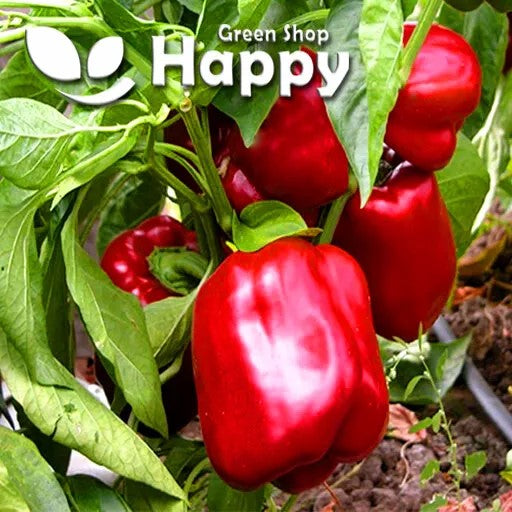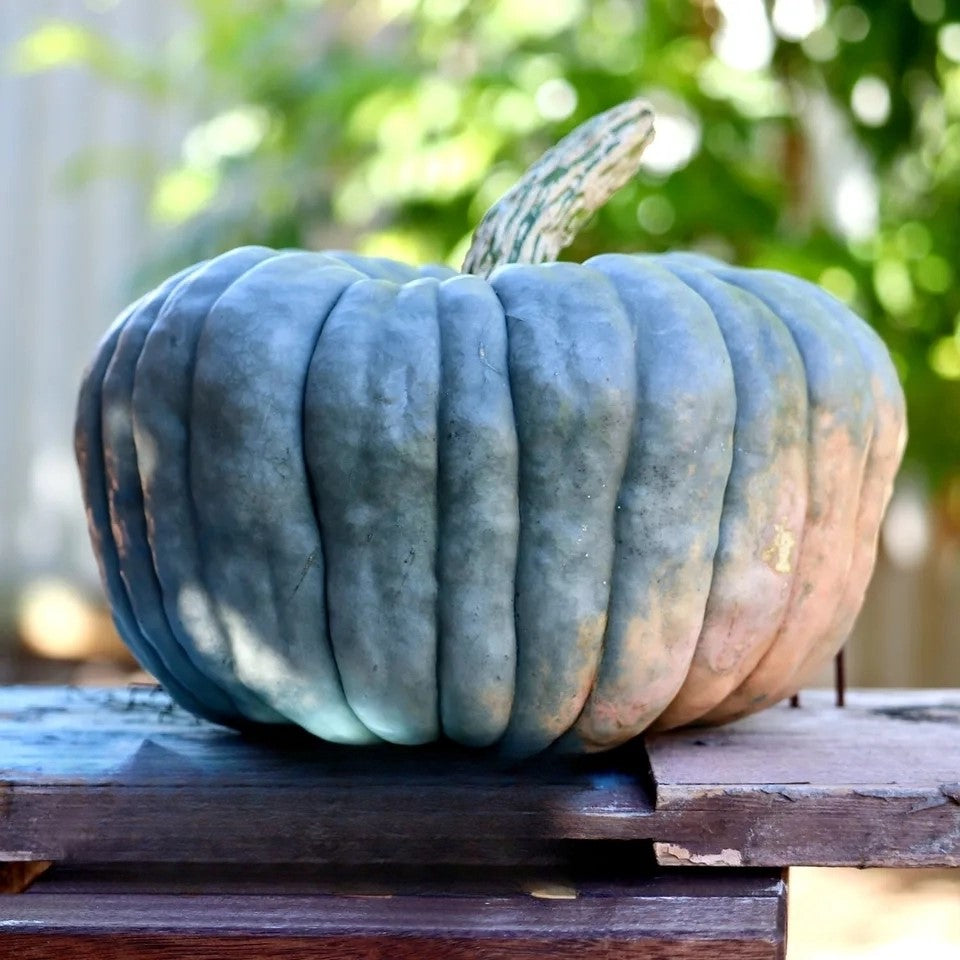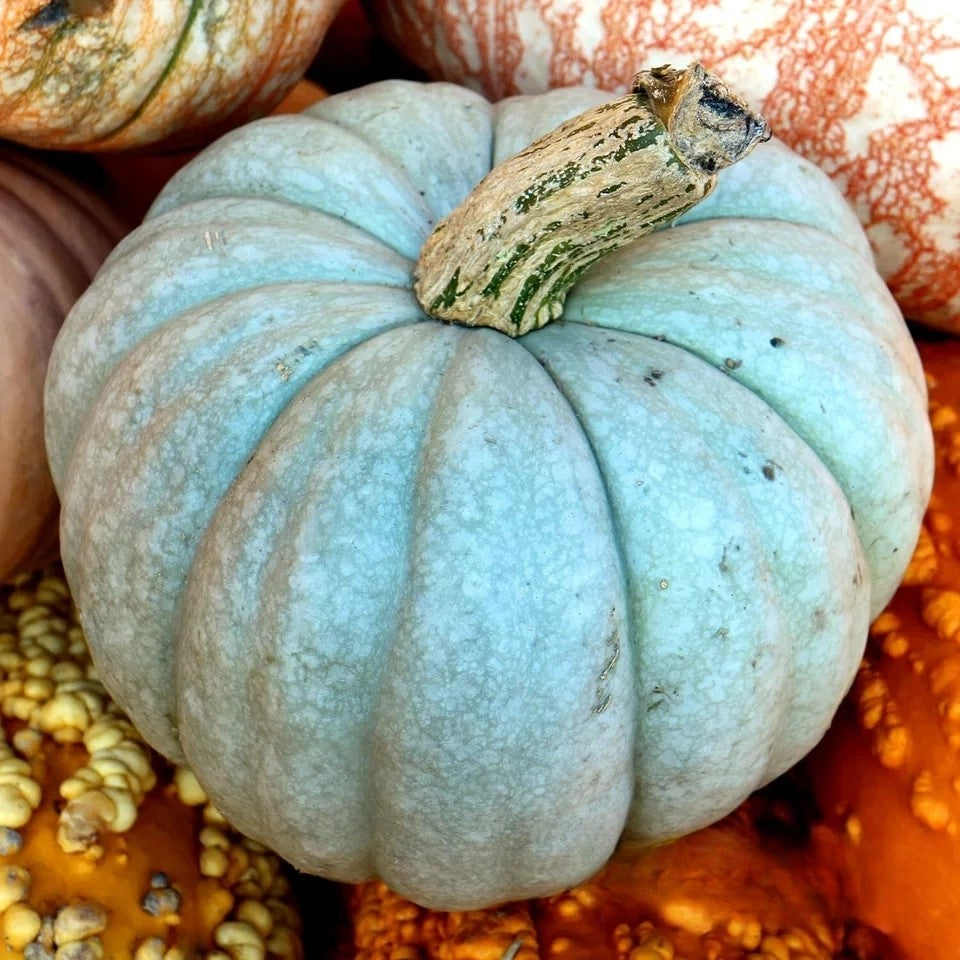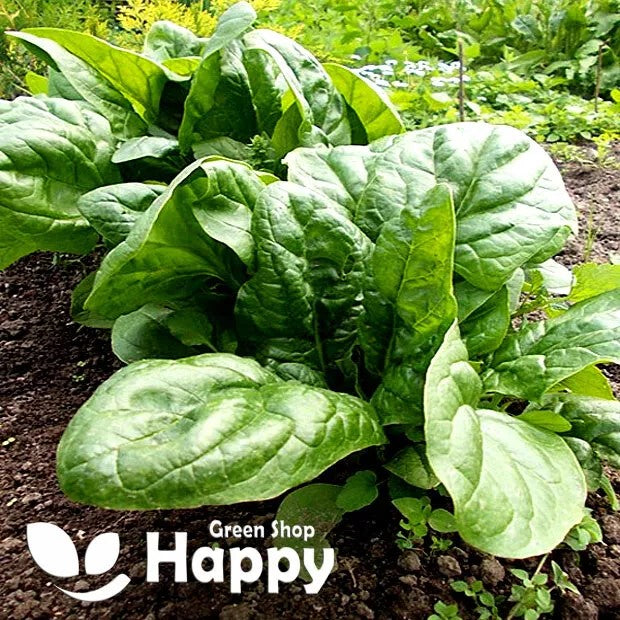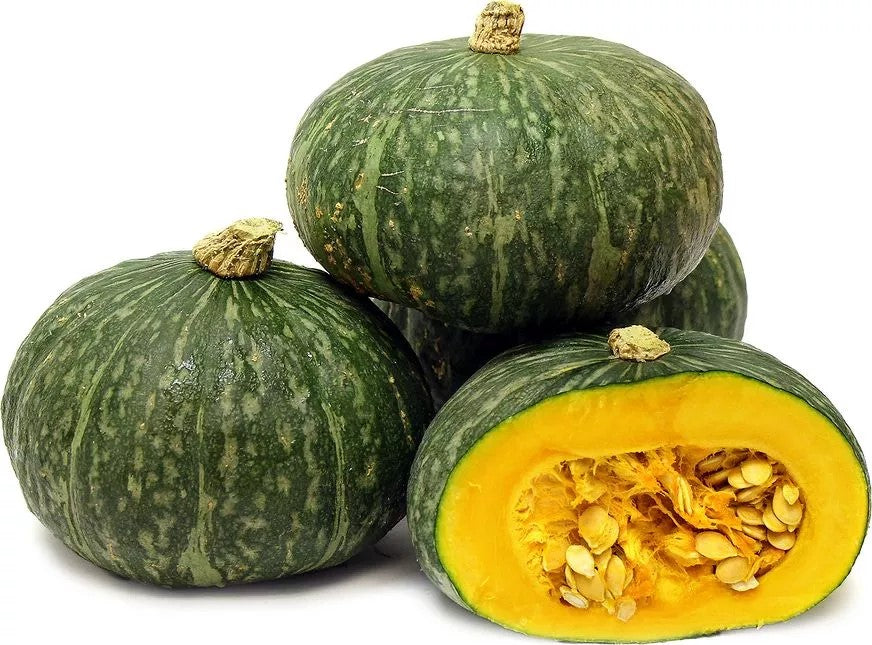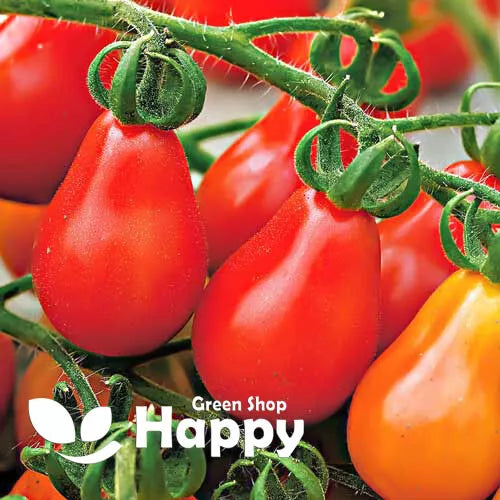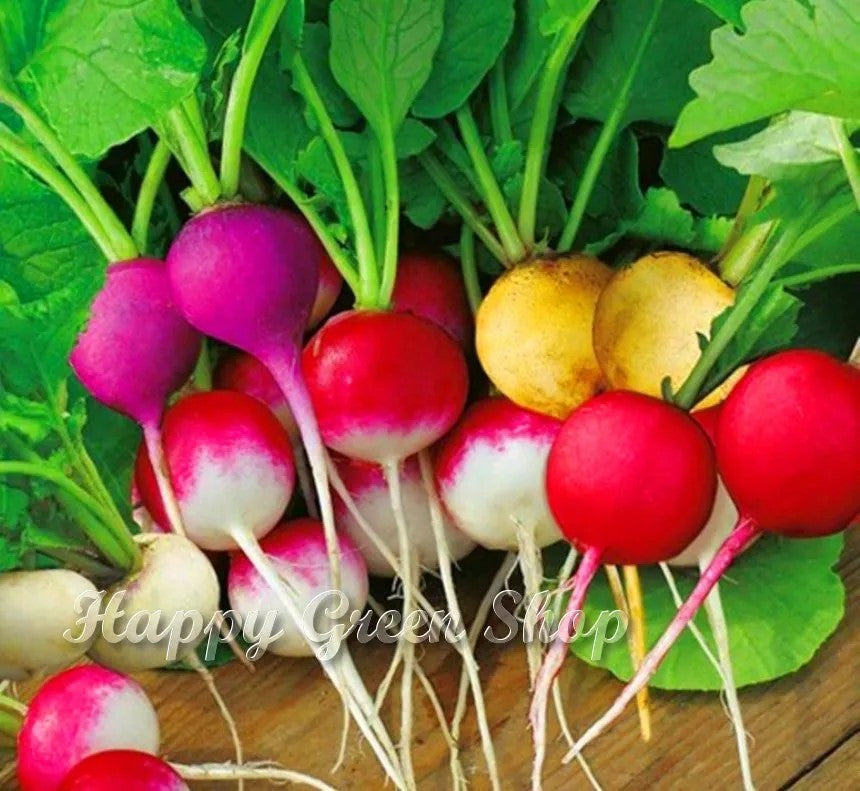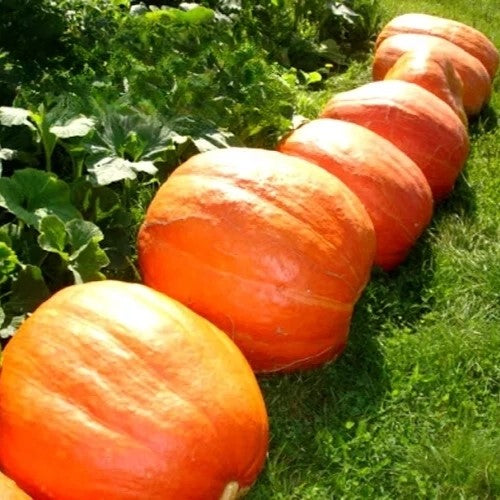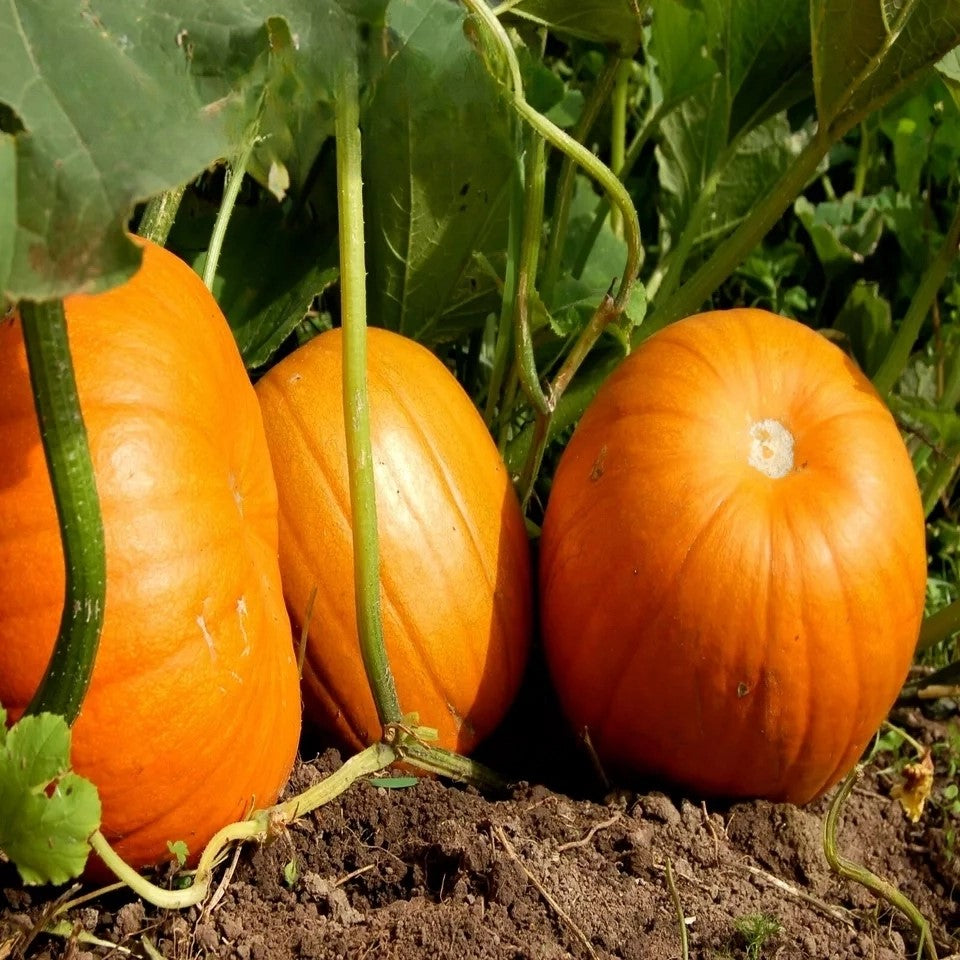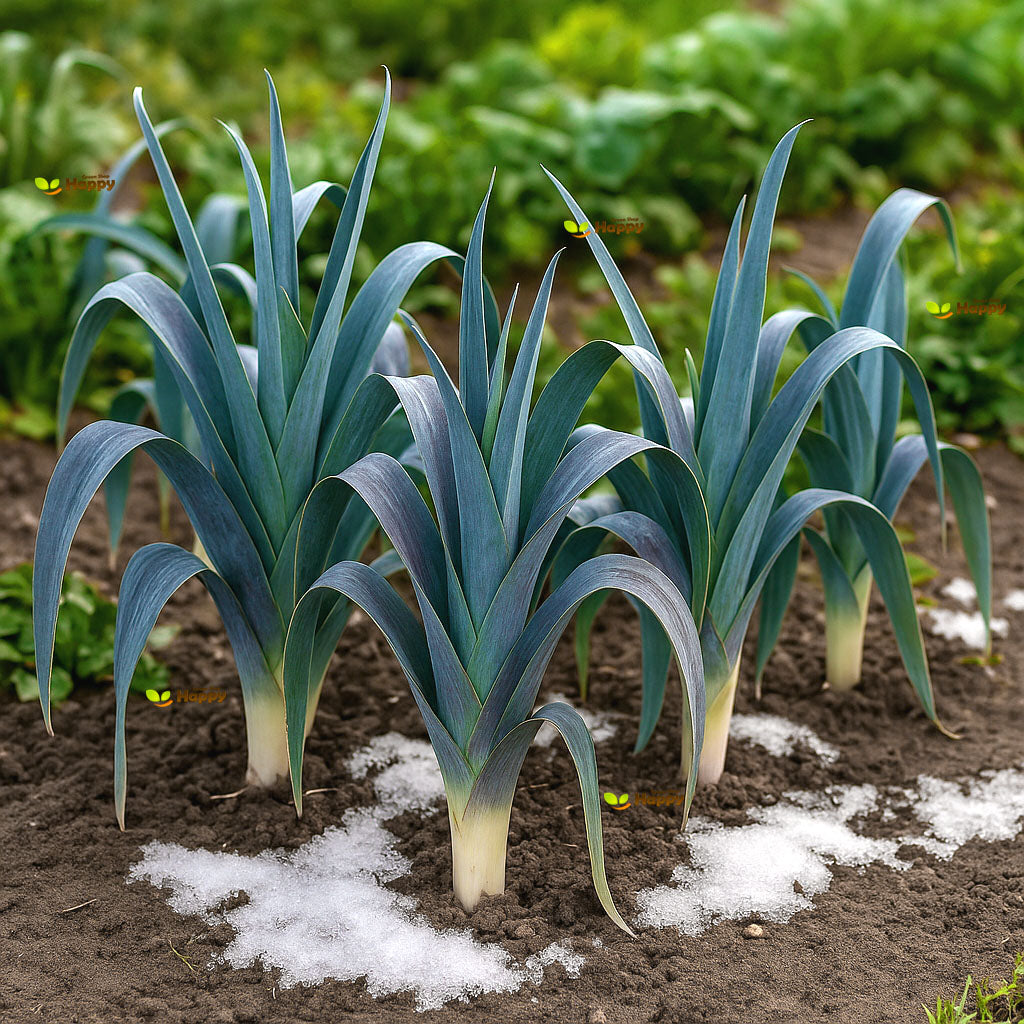Sort by:
29 products
29 products
Tomato Pink 'Maliniak' – Seeds (Solanum lycopersicum)
The Tomato Pink 'Maliniak' is a traditional Polish heirloom variety known for its large, pink, fleshy fruits bursting with rich, sweet flavor. This mid-season tomato is a favorite among home gardeners for its outstanding taste, meaty texture, and versatility in the kitchen. Perfect for slicing, fresh salads, and sandwiches, it also performs beautifully in sauces and preserves.
How to Grow
-
Sow indoors from February to April, 0.5 cm deep in seed trays or pots.
-
Keep at 18–22°C until germination.
-
Transplant seedlings into larger pots when strong enough, then outdoors or into a greenhouse after frost has passed.
-
Provide support as plants grow tall and bear heavy fruits.
Key Features
-
Large, pink fleshy fruits with rich, sweet taste
-
Traditional Polish heirloom tomato
-
Mid-season variety with reliable yields
-
Ideal for fresh eating and cooking
-
Strong, healthy plants suitable for greenhouse or outdoor cultivation
Ideal For
-
Fresh salads and sandwiches
-
Cooking into sauces and soups
-
Traditional and heirloom vegetable gardens
Sowing & Harvest
-
Sow: February to April
-
Plant out: May to June (after frost)
-
Harvest: July to September
Quick Tip
-
For best flavor, allow fruits to fully ripen on the vine before picking. Regular feeding boosts size and sweetness.
Tomato 'Black Prince' – Seeds (Solanum lycopersicum)
The Tomato 'Black Prince' is a famous Russian heirloom variety, cherished for its rich, earthy flavor and striking deep reddish-brown fruits. Medium-sized and packed with a sweet yet complex taste, this tomato is perfect for fresh eating, salads, roasting, and sauces. Hardy and adaptable, it thrives in both outdoor gardens and greenhouses, offering consistent yields of uniquely colored fruits.
How to Grow
-
Sow indoors from February to April, 0.5 cm deep in trays or pots.
-
Keep at 18–22°C until germination.
-
Transplant seedlings into larger pots, then outdoors or greenhouse after frost.
-
Support plants with canes or cages to encourage heavy yields.
Key Features
-
Traditional Russian heirloom tomato
-
Medium-sized fruits with deep reddish-brown skin
-
Distinctive sweet, rich, and earthy flavor
-
Reliable yields in greenhouse or outdoor conditions
-
Excellent for fresh eating, cooking, and sauces
Ideal For
-
Heritage vegetable gardens
-
Fresh slicing and salads
-
Cooking, roasting, and preserving
Sowing & Harvest
-
Sow: February to April
-
Plant out: May to June
-
Harvest: July to September
Quick Tip
-
For best flavor, allow fruits to fully ripen on the vine before harvesting.
Sweet Bell Pepper 'California Wonder' Red – Seeds (Capsicum annuum)
Sweet Bell Pepper 'California Wonder' Red is a classic, high-yielding variety producing large, blocky, bright red fruits with a sweet, crisp flavor. Perfect for fresh eating, salads, roasting, or stuffing, it is a versatile addition to any vegetable garden.
This vigorous and productive plant thrives in warm, sunny conditions and is ideal for home gardens, greenhouses, and containers.
How to Grow
-
Sow indoors: February – April
-
Transplant outdoors: May – June, after last frost
-
Depth: 0.5–1 cm
-
Spacing: 40–50 cm between plants, rows 60–80 cm apart
-
Position: Full sun, sheltered and warm
-
Soil: Fertile, well-drained, rich in organic matter
-
Watering: Keep soil consistently moist
Key Features
-
Large, blocky, bright red fruits with sweet, crisp flavor
-
High-yielding and vigorous growth
-
Ideal for fresh eating, salads, roasting, and stuffing
-
Suitable for home gardens, greenhouses, and containers
-
Classic, reliable bell pepper variety
Harvest
-
Harvesting period: July – September
-
Pick fruits when fully colored and firm for best flavor.
Short Tip
Regular harvesting encourages continuous production and prevents fruits from becoming overripe.
Squash 'Queensland Blue' – Seeds (Cucurbita maxima)
Squash 'Queensland Blue' is a robust pumpkin variety producing large, flattened, blue-grey fruits with sweet, golden-orange flesh. Its rich flavor makes it perfect for roasting, soups, stews, and baking. Known for excellent storage qualities, it keeps well throughout the winter months.
Ideal for home gardens, allotments, and vegetable patches, this variety combines high yield with a striking appearance and outstanding taste.
How to Grow
-
Sow indoors: March – April
-
Sow outdoors: May – June, after last frost
-
Depth: 2–3 cm
-
Spacing: 100–120 cm between plants
-
Position: Full sun, sheltered from strong winds
-
Soil: Fertile, well-drained, enriched with compost
-
Watering: Regular and deep, especially during fruiting
Key Features
-
Large, flattened blue-grey fruits with sweet, golden-orange flesh
-
Excellent for roasting, soups, stews, and baking
-
High-yielding and vigorous growth
-
Long storage life, ideal for winter use
-
Decorative and versatile vegetable
Harvest
-
Harvesting period: September – November
-
Pick fruits when the skin is hard and fully colored for best storage and flavor.
Short Tip
Leave a few centimeters of stem when harvesting to extend storage life.
Spinach 'Matador' – Seeds
(Spinacia oleracea) – Fast-Growing, Productive Variety
Spinach 'Matador' is a vigorous and reliable variety producing large, dark green, smooth leaves with a tender texture and rich flavor. It is well-suited for both spring and autumn sowings, offering multiple harvests of vitamin-rich leaves. This cold-hardy variety is slow to bolt, making it a favorite for home gardeners and kitchen use.
Key Features
-
Type: Leafy annual vegetable
-
Height: 20–30 cm
-
Leaves: Large, smooth, dark green, tender
-
Flavor: Mild, rich, and slightly sweet
-
Harvest: 40–50 days after sowing
-
Special: Good resistance to bolting
Ideal For
-
Fresh salads, smoothies, and juicing
-
Steaming, sautéing, and soups
-
Continuous cut-and-come-again harvest
-
Home gardens, allotments, and pots
Sowing & Growing
-
Sow outdoors: March–May and August–September
-
Spacing: 20–30 cm between rows; thin to 10 cm between plants
-
Soil: Fertile, moist, well-drained soil
-
Sunlight: Full sun or partial shade
-
Watering: Keep soil consistently moist to avoid bolting
Care Tips
-
Harvest young leaves regularly for best taste.
-
Provide light shade in hot summers.
-
Mulch to keep soil cool and retain moisture.
Squash 'Ambar' Seeds (Cucurbita pepo)
Grow something unique with Squash 'Ambar', a vigorous hybrid variety that produces glossy, dark green cylindrical fruits with excellent texture and flavor. Known for its high yields and uniform fruits, this variety is a reliable choice for both home gardeners and kitchen enthusiasts. Perfect for grilling, roasting, and stuffing, ‘Ambar’ brings versatility and freshness to your summer meals.
How to Grow
-
Sow indoors in April–May or directly outdoors after frost.
-
Use fertile, well-drained soil in full sun.
-
Sow 2–3 seeds 2 cm deep in pots or outdoor stations.
-
Thin to the strongest seedling, spacing 60–80 cm apart.
-
Water regularly and feed for abundant crops.
Key Features
-
High-yielding hybrid squash variety
-
Glossy dark green, uniform fruits
-
Excellent texture and mild, delicious flavor
-
Vigorous, productive plants all season
-
Ideal for grilling, stuffing, or light summer dishes
Ideal For
-
Home gardeners wanting reliable, heavy crops
-
Summer vegetable gardens
-
Fresh, healthy cooking from garden to table
-
Growers looking for uniform, market-quality fruits
Sowing
-
Best time: April to June
-
Depth: 2 cm
-
Spacing: 60–80 cm between plants
-
Position: Sunny, sheltered spot with fertile soil
-
Harvest: From July to September
Quick Tip
-
Harvest fruits regularly when young (15–20 cm) to ensure tender texture and encourage the plant to keep producing.
Red Pear Tomato – Seeds (Solanum lycopersicum)
The Red Pear Tomato is a charming heirloom variety producing clusters of small, pear-shaped, bright red fruits. With a sweet, tangy flavor and firm texture, these tomatoes are perfect for fresh snacking, salads, or adding a decorative touch to dishes. Highly productive and visually appealing, they are a favorite for both garden aesthetics and culinary use.
How to Grow
-
Sow seeds indoors from February to April, 0.5 cm deep in trays or pots.
-
Maintain 18–22°C until germination.
-
Transplant seedlings into larger pots, then outdoors or in a greenhouse after frost.
-
Support plants with stakes or cages to handle heavy clusters of fruit.
Key Features
-
Heirloom pear-shaped fruits in bright red
-
Sweet, tangy flavor and firm texture
-
High-yielding and productive
-
Ideal for fresh eating and salads
-
Attractive ornamental value for gardens and containers
Ideal For
-
Snacking, fresh salads, and garnishes
-
Home gardens and patio pots
-
Heirloom collections and colorful vegetable displays
Sowing & Harvest
-
Sow: February to April
-
Plant out: May to June
-
Harvest: July to September
Quick Tip
-
Pick fruits regularly as they ripen to encourage continuous production and maintain plant vigor.
Radish 'Rainbow Mixed' Seeds (Raphanus sativus)
Brighten up your salads with Radish 'Rainbow Mixed', a colorful blend of quick-growing radishes in vibrant shades of red, pink, white, yellow, and purple. Crisp, crunchy, and full of flavor, this mix provides variety in both taste and appearance. Perfect for gardeners who want fast results and a cheerful harvest.
How to Grow
-
Sow directly outdoors from early spring through late summer.
-
Prefers light, well-drained soil in full sun.
-
Sow seeds thinly, 1–1.5 cm deep in rows 15 cm apart.
-
Thin seedlings to 3–5 cm spacing for best roots.
-
Keep soil moist for tender, mild radishes.
Key Features
-
Colorful blend of red, pink, white, yellow, and purple radishes
-
Crisp, crunchy texture with mild to peppery flavor
-
Fast-growing and ready in just a few weeks
-
Adds variety and color to salads and garnishes
-
Suitable for succession sowing for continuous crops
Ideal For
-
Fresh salads, snacks, and garnishes
-
Quick and easy crops for beginners
-
Adding vibrant color to the vegetable patch
-
Continuous harvests through spring and summer
Sowing
-
Best time: March to September
-
Depth: 1–1.5 cm
-
Row spacing: 15 cm
-
Plant spacing: Thin to 3–5 cm
-
Harvest: 3–5 weeks after sowing
Quick Tip
-
Sow little and often for a steady supply of fresh, colorful radishes.
Pumpkin 'Golias' – Seeds
(Cucurbita pepo) – Giant, Decorative & Edible Pumpkin
Pumpkin 'Golias' is an impressive giant pumpkin variety, producing extra-large, round fruits with smooth orange skin. Known for its huge size and vigorous growth, it makes a real garden showpiece while also being delicious in soups, bakes, and pies. Perfect for competitions, carving, or autumn displays.
Key Features
-
Type: Annual fruiting vegetable
-
Fruit size: Extra-large, giant pumpkins
-
Skin: Smooth orange
-
Flavor: Mild, sweet flesh suitable for cooking
-
Harvest: Late summer to autumn
-
Use: Cooking, carving, decoration, competitions
Ideal For
-
Giant vegetable growing
-
Autumn harvest festivals & carving
-
Cooking soups, pies, and bakes
-
Impressive garden displays
Sowing & Growing
-
Sow indoors: April–May, 2–3 cm deep in pots.
-
Transplant outdoors: Late May–June, after last frost.
-
Direct sowing: From mid-May, 2–3 cm deep.
-
Spacing: 1–1.5 m between plants.
-
Soil: Rich, fertile, well-drained with compost/manure.
-
Harvest: September–October, when skins harden.
Care Tips
-
Requires full sun and plenty of water.
-
Feed regularly for maximum fruit size.
-
Protect from frost – harvest before first frost arrives.
Showing 18/29





